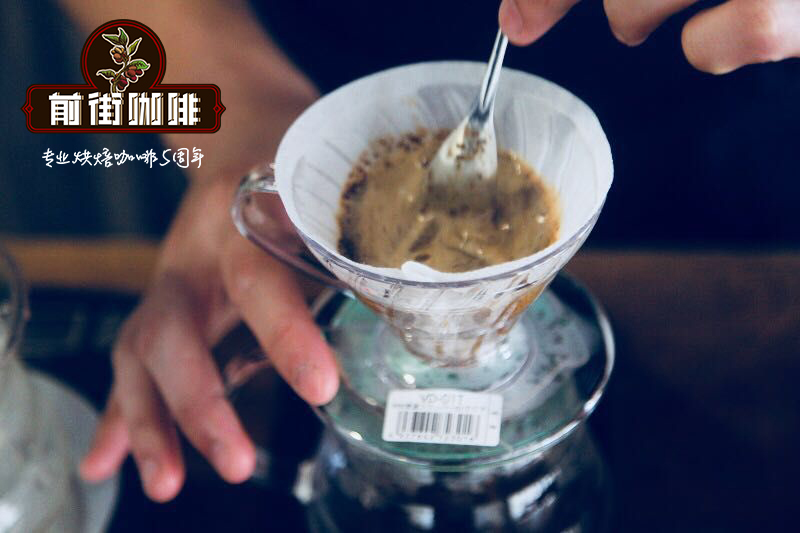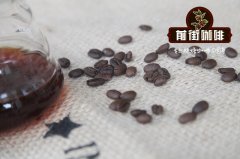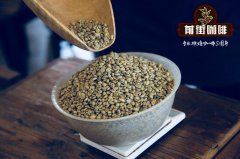Is Malaba Coffee of good quality? is Malaba Coffee good to drink by hand? characteristics of Malaba Coffee treatment

Professional coffee knowledge exchange more coffee bean information please follow the coffee workshop (Wechat official account cafe_style)
It is said that a long time ago, during the shipping of raw coffee beans from India to Europe, the raw beans were affected by the high temperature and moisture in the Indian Ocean. This is the origin of the "wind stain." In addition to the expansion and enlargement of the size of the raw beans after the wind stain, the color has also changed from emerald green to golden yellow. The brewed coffee is said to taste mellow and has a unique taste, which has become a feature of Malaba coffee in India.
Later, "wind stains" became a special treatment of coffee beans.
In May or June every year, monsoon phenomena begin to appear in southwestern India, so when coffee beans are harvested, they are specially placed in the moist southwest monsoon "wind stains", using the moisture and hot weather in the Indian Ocean for wind-soaked Malaba coffee beans. After the monsoon blowing for 16 months, the coffee beans are swollen and enlarged, and the color begins to change from green to golden yellow. The acidity of the beans has also been reduced, which is Monsooned Malabar Wind-stained Malaba Coffee, also known as Monsoon Malaba Coffee.
Recommended cooking method: hand flushing
Degree of grinding: 4 (Fuji R440)
Water temperature: 83 °C
Kono filter cup, 17 grams of powder, water temperature 83 degrees, grinding 4, water powder ratio close to 1:13
Technique: steaming with 30 grams of water for 30 seconds
Segment: water injection to 120g cut off, slightly larger water injection to 221g
The total extraction time is 1:50-2 minutes.
Other suggestions for trickling extraction:
Normal pressure: recommended 4 degree of grinding, water temperature 83 °C
Philharmonic pressure: recommended 4 degree of grinding, water temperature 83 °C
Important Notice :
前街咖啡 FrontStreet Coffee has moved to new addredd:
FrontStreet Coffee Address: 315,Donghua East Road,GuangZhou
Tel:020 38364473
- Prev

Description of characteristics and Flavor of Malaba Coffee description of Regional characteristics of planting areas of Malaba Coffee
Professional coffee knowledge exchange more coffee bean information please follow the coffee workshop (Wechat official account cafe_style) about the wind-stained Malabar, wind-stained Malaba coffee is a coffee from the Malabar region of India, with a strong wheat tea flavor, bean appearance and flavor unique coffee. Coffee has been the unique flavor of Indian-style Malaba coffee since the 17th century.
- Next

Indian style Malaba treatment what is Indian monsoon coffee? What kind of coffee is Malaba coffee?
Professional coffee knowledge exchange more information about coffee beans Please follow the coffee workshop (Wechat official account cafe_style) Indian style-stained Malaba coffee has been favored by Europeans since the 17th century. This kind of wind-stained coffee is a new flavor created inadvertently. In the 17th and 18th centuries, India shipped coffee beans to Europe by sailboat, which took six months to buy raw beans.
Related
- Detailed explanation of Jadeite planting Land in Panamanian Jadeite Manor introduction to the grading system of Jadeite competitive bidding, Red bid, Green bid and Rose Summer
- Story of Coffee planting in Brenka region of Costa Rica Stonehenge Manor anaerobic heavy honey treatment of flavor mouth
- What's on the barrel of Blue Mountain Coffee beans?
- Can American coffee also pull flowers? How to use hot American style to pull out a good-looking pattern?
- Can you make a cold extract with coffee beans? What is the right proportion for cold-extracted coffee formula?
- Indonesian PWN Gold Mandrine Coffee Origin Features Flavor How to Chong? Mandolin coffee is American.
- A brief introduction to the flavor characteristics of Brazilian yellow bourbon coffee beans
- What is the effect of different water quality on the flavor of cold-extracted coffee? What kind of water is best for brewing coffee?
- Why do you think of Rose Summer whenever you mention Panamanian coffee?
- Introduction to the characteristics of authentic blue mountain coffee bean producing areas? What is the CIB Coffee Authority in Jamaica?

